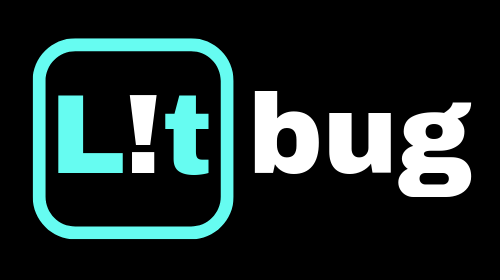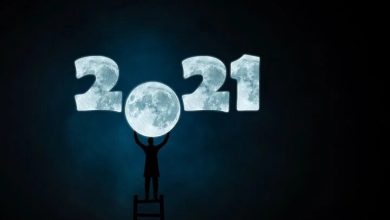David Foster Wallace, a renowned literary figure, delivered a commencement speech titled “This Is Water: Some Thoughts Delivered on a Significant Occasion, About Living a Compassionate Life” at Kenyon College on May 21, 2005. The speech was later published in The Best American Nonrequired Reading in 2006. The speech emphasizes the importance of developing a conscious awareness of one’s thoughts and choosing how to perceive and respond to the world around us. It encourages listeners to consider the impact of their perspectives and assumptions on their daily lives.
By 2005, Wallace had gained national recognition as a literary celebrity, primarily for his novel Infinite Jest, published in 1996. Additionally, he was acclaimed for his nonfiction works such as A Supposedly Fun Thing I’ll Never Do Again (1997), Everything and More (2003), and the essay “Consider the Lobster” (2004). Among his notable collections of short stories are The Girl with the Curious Hair (1989), Brief Interviews with Hideous Men (1999), and Oblivion (2004).
This is Water | Summary
Beginning his speech with a clichéd parable from Infinite Jest that serves as a metaphor for the invisible forces that shape our lives and how we often fail to recognize them, David Foster Wallace challenges the conventional expectations placed on commencement speakers and explores the idea that certain clichés and overused stories can still convey profound truths. Unlike the wise old fish in his analogy, Wallace does not claim to possess a profound philosophical understanding of the “water” of life. Instead, he focuses on the lessons embedded within these well-worn narratives. He asserts that the most significant and fundamental realities are often the most difficult to articulate.
Wallace deconstructs common speech topics, such as the value of a liberal arts education in terms of its “human value” and the development of critical thinking skills rather than the accumulation of knowledge. While he found these ideas tiresome as a student, he acknowledges that there is wisdom to be found within clichés. He emphasizes that what truly matters is not how students think, but rather what they choose to direct their thoughts towards. Despite the seemingly obvious freedom to think about anything, Wallace encourages his audience to pay attention to the seemingly mundane and commonplace aspects of life.
Wallace shares another story that highlights the paradox of personal interpretation, emphasizing that the same experience can hold entirely different meanings for different individuals. He suggests that this concept is readily accepted from a liberal arts perspective, which promotes tolerance and diversity by avoiding categorizing anyone as definitively right or wrong. However, Wallace challenges this notion by proposing a different approach: he suggests that it is more productive to investigate an individual’s beliefs by recognizing them as an agent with free will, rather than as a predetermined object. He goes on to provide examples such as intentional choice, arrogance, and blind certainty as ways in which people shape and confine their own beliefs.
Wallace argues that the true value of education is not about acquiring knowledge or intellect but rather about becoming conscious and aware of one’s thinking. He suggests that our default setting is to perceive the world as revolving around ourselves, with our desires and needs at the center. This self-centered perspective can lead to frustration, dissatisfaction, and a lack of empathy. The speech highlights the challenges of everyday life and the monotony of routine activities like standing in line at the grocery store or being stuck in traffic. Wallace suggests that these situations provide an opportunity to choose how to perceive them. He encourages listeners to break free from the automatic, self-centered thinking that often dominates their minds and instead cultivates a compassionate and empathetic approach.
According to Wallace, true freedom comes from making conscious choices about how to perceive and respond to the world. He acknowledges that this kind of awareness is difficult to maintain consistently, as our natural tendency is to default back to our self-centered thinking. However, he argues that with practice and effort, we can train our minds to recognize our own biases, assumptions, and automatic reactions, enabling us to choose alternative perspectives and live more fulfilling lives.
This is Water | Analysis
“This Is Water: Some Thoughts Delivered on a Significant Occasion, About Living a Compassionate Life” by David Foster Wallace has been critically acclaimed for its profound insights and thought-provoking ideas. The speech offers a critical analysis of various aspects of human existence, societal norms, and the power of conscious awareness.
One of the key strengths of the speech is its exploration of the hidden realities that surround us. Wallace challenges the audience to question their default modes of thinking and to recognize the often overlooked aspects of everyday life. By urging listeners to pay attention to the mundane and ordinary, he prompts a critical examination of the structures and routines that shape our experiences.
David Foster Wallace revisits the topic of liberal arts education and provides further insight by suggesting that it is not “really about the capacity to think, but rather about the choice of what to think about”, about equipping students with the ability to exert control over their thoughts and choices. He emphasizes that the essence of a liberal arts education lies in developing awareness, cultivating attention, and actively constructing meaning in one’s life. Wallace cautions against allowing the mind to become a dominant force, emphasizing the importance of maintaining a sense of agency and control over our thoughts and actions. Wallace draws attention to the challenges and realities of adult life in America, such as the pressures, monotony, and frustrations that young students may not yet be intimately familiar with. He suggests that if individuals are not equipped with the necessary tools to navigate these aspects of life, it can lead to a sense of meaninglessness or even self-destructive behaviors.
Wallace’s emphasis on the subjectivity of interpretation and the role of perspective is also a notable aspect of the speech:
“The exact same experience can mean two totally different things to two different people”.
He highlights that individuals construct their understanding of the world based on their beliefs, biases, and preconceptions. This analysis encourages critical thinking and a willingness to consider alternative viewpoints, fostering a more inclusive and empathetic approach to human interactions. Wallace challenges the notion that accepting the importance of conscious awareness and personal choice is easier from a liberal arts perspective that promotes tolerance and diversity. He argues that instead of simply labeling people’s beliefs as right or wrong based on their affiliation with certain ideologies, it is more beneficial to approach individuals as agents of free will and explore the reasons behind their beliefs. Wallace highlights intentional choice, arrogance, and blind certainty as ways in which individuals construct and limit their own beliefs.
Furthermore, Wallace critically examines the societal expectations and clichés surrounding commencement speeches. He challenges the conventional wisdom about the value of a liberal arts education and calls for a deeper examination of personal beliefs and choices. By highlighting the dangers of conformity and blind certainty, he encourages individuals to embrace intellectual curiosity and actively engage with different perspectives.
Some critics argue that while the speech offers valuable insights, it falls short in providing concrete solutions or practical guidance for implementing its ideas. Wallace’s emphasis on the awareness of one’s consciousness and the choice of what to think about may be seen as somewhat abstract and difficult to apply in daily life.
Additionally, there have been discussions about the speech’s accessibility and its relevance to individuals from diverse backgrounds. Some argue that the speaker’s message may resonate more strongly with privileged individuals who have the luxury to reflect on their existence, while others may find it less relatable or applicable to their own experiences.
Despite these critiques, “This Is Water” remains widely regarded for its ability to provoke introspection and challenge deeply ingrained patterns of thought. It invites individuals to reconsider their assumptions, cultivate empathy, and strive for a more compassionate and mindful approach to living.
Overall, “This Is Water” is characterized by a pervasive hyper-self-consciousness that reflects David Foster Wallace’s philosophical thinking and critical perspective. In his speech, Wallace skillfully weaves together various schools of thought, employing humorous parables such as the old fish and the encounter between an atheist and a religious person. He also draws on the insights of notable philosophers, notably Ludwig Wittgenstein, who focused on the complexities of language and communication, including the potential for misunderstandings to arise.
Wallace’s speech demonstrates a multifaceted approach to examining the human thought process. He tackles the subject from multiple angles, employing a range of techniques to shed light on how people think and the underlying mechanisms at play. This reflects his philosophical depth and his ability to synthesize diverse ideas into a cohesive narrative.
A Buddhist undercurrent runs through “This Is Water,” as Wallace urges the graduates to cultivate awareness, observe their surroundings, and transcend their ignorance about the true nature of life. In this regard, the speech aligns with Buddhist teachings that emphasize mindfulness and awakening. The speech also incorporates elements of perspectivism, a theory associated with Friedrich Nietzsche, which asserts that knowledge is inherently limited by an individual’s point of view and interpretation. Wallace’s use of various philosophical sources, including Nietzsche, underscores the importance of recognizing the subjective nature of our understanding and the need to embrace multiple perspectives. Drawing from these philosophical influences, Wallace highlights the presence of profound truths that often remain hidden in plain sight. He employs self-effacing statements, such as “please don’t think I’m giving you moral advice,” to bridge the gap between the speaker and the audience, inviting them to participate in the shared exploration of these truths.
In essence, “This Is Water” stands as a testament to Wallace’s intellectual acuity, incorporating elements of humor, philosophical history, and critical analysis. It delves into the intricacies of human cognition and communication, providing a nuanced exploration of how individuals perceive and navigate the world.
This is Water | Rhetorical Analysis
In “This Is Water,” David Foster Wallace employs various rhetorical devices to effectively convey his message and engage the audience. Wallace employs relatable anecdotes and parables, such as the story of the fish or the encounter between an atheist and a religious person, to illustrate his points and make them more accessible to the audience.
Wallace utilizes repetition for emphasis and to reinforce key ideas throughout the speech. For example, he repeats the phrase “This is water” as a reminder of the pervasive and often overlooked realities of daily life.
The speech includes vivid imagery to paint a clear picture in the minds of the listeners. For instance, Wallace describes the frustrating and mundane aspects of adult life, such as waiting in line at the grocery store or being stuck in traffic, to evoke a sense of shared experience.
Wallace poses rhetorical questions to provoke thought and engage the audience in introspection. By asking questions like “What is water?” or “How do you choose to perceive the world”, he prompts listeners to reflect on their perspectives and assumptions.
The speech often employs contrasting ideas and antithesis to highlight opposing viewpoints and emphasize the importance of conscious awareness. Wallace juxtaposes automatic, self-centered thinking with intentional, empathetic thinking, emphasizing the choices we have in shaping our experiences.
Wallace incorporates humor throughout the speech to both entertain the audience and disarm potential resistance to his message. The use of wit and comedic elements help to keep the audience engaged and receptive to his ideas. These rhetorical devices are employed strategically by Wallace to enhance the effectiveness of his communication, making complex concepts more relatable, engaging, and memorable for the audience.



